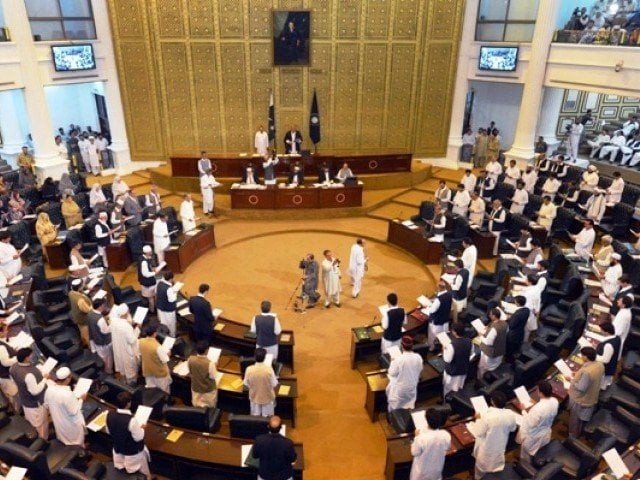FATA to integrate secretariat into K-P
Outline consists of phase-wise mergers, starting with health and education depts

The first phase proposes the integration of education and health sectors in the former tribal agencies within three months so as to ensure a smooth transition.
PHOTO: AFP
In this regard, the provincial government has chalked out a plan to merge what was known as the Federally Administered Tribal Areas (Fata) Secretariat with the Khyber-Pakhtunkhwa (K-P) civil secretariat.
The plan starts with a phase-wise merger of directorates (for areas previously labelled as Fata) with K-P departments including administration, infrastructure and coordination, planning and development, finance, law and order, social sectors and production besides the livelihood department.
Caretakers take measures to speed FATA-KP merger
The first phase proposes the integration of education and health sectors in the former tribal agencies within three months so as to ensure a smooth transition.
Up next will be Fata’s department of agriculture research, livestock and dairy development, agriculture extension and fisheries.
Thereafter, in the second phase, the departments of zakat and ushr, social welfare, sports, culture and youth affairs, population welfare, forests, local and rural development, Information, mineral industry and technical education, irrigation and hydel power will be merged with their corresponding departments in K-P within six months.
The third phase of the plan includes integration of works and services within a year.
Each department has been asked to chalk out their own individual integration plan after liaisoning with the corresponding directorate and submit it to the chief secretary at least two months prior to the merger.
FATA ADP approval, no longer governor’s ambit
Policing the western frontier
The plan also outlines to merge the Home and Tribal Affairs Department with the police so that at least 10 police personnel could be deployed in each tribal district (formerly known as agencies) while the number of levies and khasadars deployed is reduced.
In the tribal subdistricts (formerly known as frontier regions) — including those of Peshawar, Kohat, Lakki Marwat, Bannu, Tank and Dera Ismail Khan — the district police officer (DPO) of the adjoining settled district, assisted by an SDPO, will be responsible for policing in these strips of land.
The re-organisation of existing law enforcement agencies including levies and Khasadars (policemen chosen locally by various tribes) will be divided into two categories.
In the first category, a force of around 7,000 personnel will be responsible for regular policing in the tribal districts while the remaining will work in the sub-divisions under the operational control of supervisory officers from the K-P police.
The second category will task around 4,000 levies personnel with enforcement of municipal laws. They will operate under assistant commissioners with supervision by the respective deputy commissioners. The current sanctioned strength of levies stands at 11,739 while 17,965 Khasadar forces are deployed in the tribal districts and sub-divisions.
This is expected to be reduced to just 15,000 since many are expected to retire from service.
Of the 15,000 Khasadars, 2,500 may be offered a severance package, similar to a Golden Shake Hand Scheme in the government. Around 9,000 Khasadars will be offered proper training and merged into the Levies Force.
The remaining 3,500 Khasadars may be allowed to complete their service until retirement. In the initial phase, a tribal wing will be established to train staff and review existing litigation trends, assessing the legal requirements to carry out prosecution services.
The draft policy also seeks to extend the jurisdiction of prisons, probation and reclamation facilities by establishing a wing within the K-P prisons department, headed by an officer of the SSP rank, to plan further division of prison departments for each district.
local govt
On the local government front, a three-tier system has been chalked out. It includes Tribal District, Tehsil and Union Councils.
The elections for lower tier will be based on ‘Nikaat’ to ensure equal representation of tribes while locally elected representatives will be nominated in the Council of Elders so that elected members can replace the traditionally appointed Maliks in jirgas.
Published in The Express Tribune, June 25th, 2018.













COMMENTS
Comments are moderated and generally will be posted if they are on-topic and not abusive.
For more information, please see our Comments FAQ